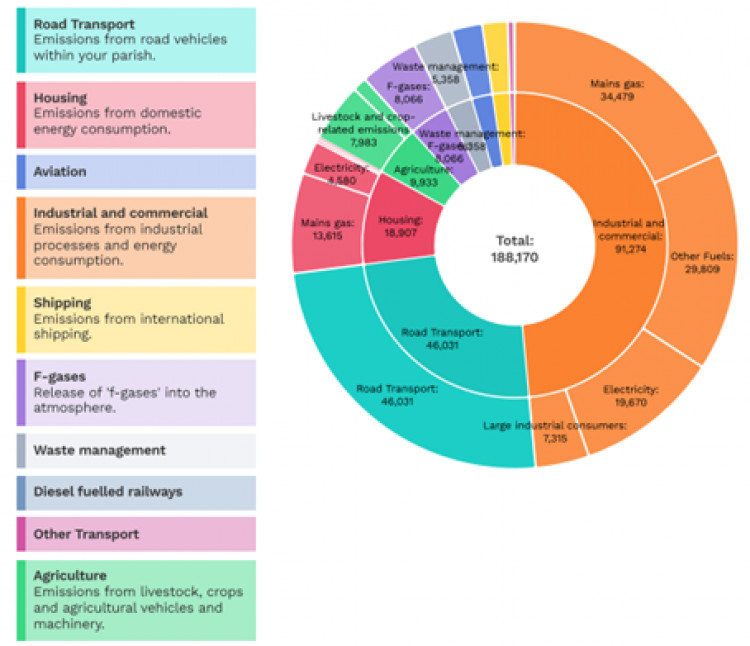What does Ashby's 'carbon footprint' actually look like? And how can it be reduced over the coming years?
By Guest author 21st Feb 2024
By Guest author 21st Feb 2024

Ashby de la Zouch Town Councillor, TOM STANLEY, provides his monthly environmental column, and has some facts and figures about the town's carbon footprint
As a term, carbon footprint was surprisingly coined in the 1990s, though its use has only recently become used more widely outside of academic texts.
Despite this, and it being used more commonly when talking about the environment and the climate emergency, what exactly is a carbon footprint, and how it can help with combating the climate emergency, is not widely discussed.
The definition of a carbon footprint, taken straight from the Oxford English dictionary, is: "The environmental impact of a particular individual, community, or organisation, or of a specific event, product, etc."
The footprint is calculated by understanding the amount of greenhouse gasses emitted on an annual basis for everything you do, from heating your house to how you get to work - and even how your waste is disposed of.

The resulting footprint is measured in metric tonnes of carbon dioxide and includes other greenhouse gases such as methane, carbon dioxide and water vapour to give a fuller picture.
Because each of these gases has a different warming effect on the environment, the emissions of each gas are converted into the equivalent emission of Carbon Dioxide and are then put together as a carbon footprint expressed in tonnes of carbon dioxide equivalent (tCO2e).
It is worth noting that one tCO2e is the equivalent to the carbon footprint you generate flying from Paris to New York.
On average each household in Ashby has a carbon footprint of 11.3 tCO2e, according to the impact community carbon calculator produced by the University of Exeter and the Centre for Sustainable Energy.
When expanded to include everything that occurs in Ashby, from farming to industry, and even transporting goods that we consume, then the carbon footprint balloons to 118,170 tCO2e.
The next step is now how we use this data to make meaningful changes and leave our planet in a state where future generations can flourish.

The lead must come from government to make the correct environment for both businesses to invest in greener technologies and for individuals to be able to make the change to a greener future without any detrimental effects.
Despite the current lack of clear direction, people and organisations have already started to make small changes that are necessary to reduce carbon footprints.
This can be seen in Ashby from the wind turbines and solar panels in surrounding fields to the electric cars, with their green stripe number plates, that are appearing in increasing numbers on our streets.
CHECK OUT OUR Jobs Section HERE!
ashby vacancies updated hourly!
Click here to see more: ashby jobs
Share:













